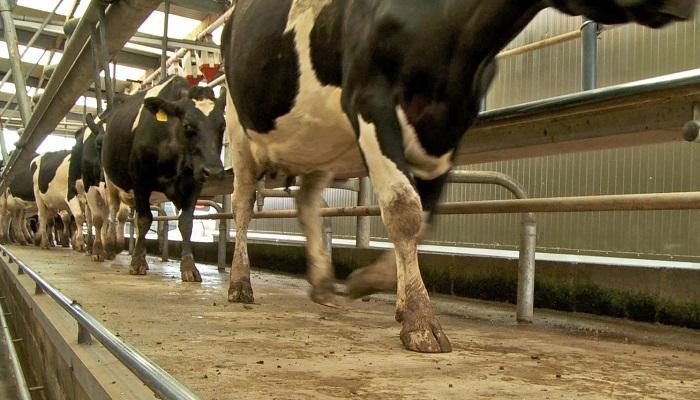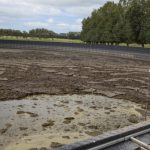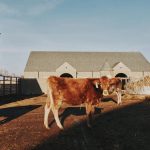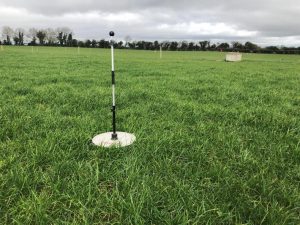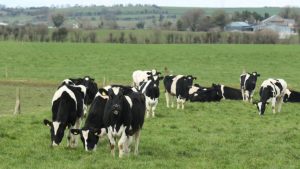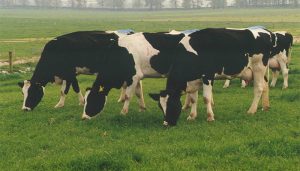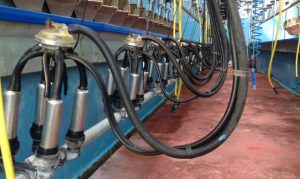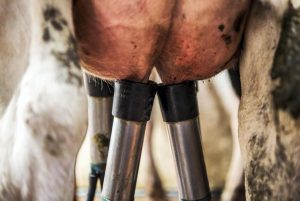
With difficult grazing conditions extending into early April, decisions made over the coming days and weeks will have either a positive or negative impact on the body condition score, milk production capacity and the success of the upcoming breeding season on many dairy farms.
As part of the ‘Managing the herd in current weather conditions’ webinar on April 2, Teagasc Dairy Specialist, James Dunne outlined a number of diets to ensure that cow condition is maintained during this critical juncture, noting that “the point has come where we need to get grazed grass into cows where at all possible”.
“We’re heading into April. We’re getting closer to that start of breeding date. We’re getting closer to peak production and really the challenge is how we best feed the herd in the current situation,” James explained.
“The number one rule is to make sure the cow is fed to the best of our ability every day. We need to protect body condition and we need to mind the cow,” James added. If this is not prioritised, he said: “We’re going to run into issues in terms of animal performance, body condition score loss and we’re heading towards that breeding start date and [could face] some reproductive issues on the back of all of that.”
Scenario one
As part of the webinar, James detailed a number of diets. The first being “probably the most common one offered over the last few weeks”, as cows were housed for prolonged periods. In this scenario, cows are offered 11kg of a 70 DMD silage and 5kg of a 16% crude protein ration. This diet, as outlined in table 1 below, has the potential to support 21.2kg of milk and 3.16% milk protein.
“In that situation, intakes are compromised due to forage quality and, as a result, the energy density and the protein density of the diet is lower than we’d like,” James explained.
He added: “Average to poor quality silage and 5kg of meal isn’t adequate. Cows are going to lose a significant amount of condition. They’re not going to perform and we are going to head into the breeding season in a poor place.”
Table 1: Diet options for cows
Table 1: Milk production potential from various diets
| Indoors fulltime | Grass by day | Indoors fulltime | Grass fulltime | |
|---|---|---|---|---|
| Scenario one | Scenario two | Scenario three | ||
| 70 DMD silage | 11 | 6 | 10.5 | – |
| Grass | 0 | 7 | 0 | 13.5 |
| 16% crude protein ration | 5 | 5 | 6.5 | 4.5 |
| High fibre / high energy straight | 0 | 0 | 2 | 0 |
| Total dry matter intake | 15.7 | 17.1 | 17.3 | 17.4 |
| Energy (UFL) supply | 14.2 | 16.5 | 16.1 | 17.2 |
| Protein (PDI) supply | 1,330 | 1,630 | 1,520 | 1,880 |
| Milk kg supported | 21.2 | 24.5 | 24.2 | 25.4 |
| Protein percentage (diet potential) | 3.16 | 3.46 | 3.30 | 3.68 |
Scenario two – grass by day
In scenario two, James looked at the milk production potential of cows still offered 5kg of a 16% crude protein ration and 6kg (DMD) of a 70DMD silage, but instead having access to grass for three or four hours per days which adds 7kg of grass (DM) to the diet mix.
“When we actually look at what this has done, it has increased the total dry matter intake to the tune of about 1.5kg which subsequently has increased that energy and protein density of the diet. That’s ultimately going to support an extra three kilograms of milk and get protein back on track,” James said.
Although grazing is posing a challenge on many farms, James advised farmers to assess the situation on their own farms, walk the farm daily and identify areas where cows can access grass for even a three or four hour period each day as “there’s no substitute for grazed grass”. The focus on getting cows to grass even for a short period was further amplified by the tightening of silage stocks, with some farmers having to purchase and feed silage of poor quality.
On getting cows out to grass, James said: “I’m not saying that’s straightforward, but we’re at a situation now where we ultimately need to be looking for these dry spots on the farms. That may be three or four days grazing in the week. There may be a couple of days where we won’t actually get that in.
“We probably are going to do a certain amount of damage, which is repairable, and we probably need to understand that. Don’t be waiting for that week or 10 days of dry weather because it doesn’t look like it is actually coming.”
Scenario three – can’t access grass
Some farms, despite their best efforts, will not be able to get cows out to grass even for a short period each day owing to difficult grazing conditions or challenging underfoot conditions. Where this is the case, James provided another diet option to support milk production and protect body condition score ahead of breeding.
Under this diet, concentrate feeding levels are upped to 8.5kg, consisting of 6.5kg of a 16% crude protein ration fed through the parlour and 2kg of a high fibre / high energy straight fed at mid-day to ease issues surrounding acidosis and to support adequate fibre intake. Under this diet, cows are also offered 10.5kg (DM) of a 70 DMD silage.
This diet has the capacity to support 24.2kg of milk and 3.30% protein, with the former being 3kg ahead of the milk production capacity as outlined in scenario one.
On why the straight is included, James said: “We need to avoid complicating feeding solutions. Labour is an issue on farm and there’s a lot of work with on-off grazing and everybody acknowledges that. You’re doing cubicles twice when maybe cows would be out full time at this stage.
“We don’t want to complicate and add labour into the system that’s already possibly under pressure and that’s where we are talking about the likes of those dry feeds. They are often very easy to put in and very easy to take out so that may be an option for some people in the short term.”
Also joining James on the webinar, Teagasc Dairy Specialist, Stuart Childs said: “If wet ground is limiting and you can’t get out to graze then you have to go up to 8.5kg of concentrate and that requires going with your mid-day feed in order to avoid acidosis issues.
“We know the conditions that are out there. What we are saying is that there are opportunities presenting themselves to graze on occasion and people need to take those opportunities when they come. There are days when you just can’t graze and, when you can’t, the objective is to keep the cows well fed.”
You can now read the most important #news on #eDairyNews #Whatsapp channels!!!
🇺🇸 eDairy News INGLÊS: https://whatsapp.com/channel/0029VaKsjzGDTkJyIN6hcP1K
